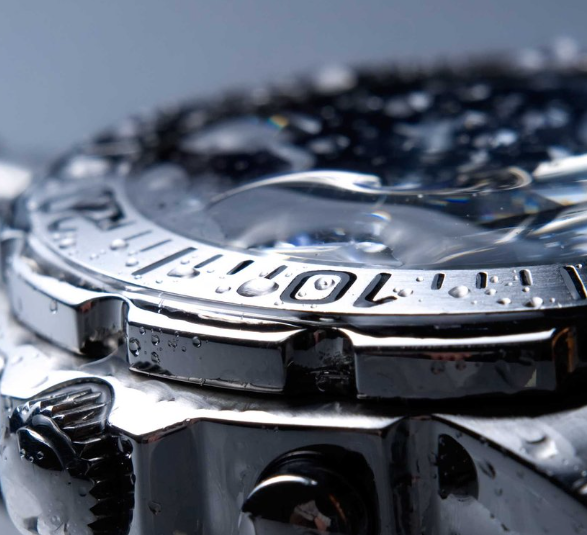
Diving Deep: Understanding Watch Water Resistance
When it comes to watches, the term "water resistance" is often thrown around, but what does it actually mean? It's crucial to understand that water resistance isn't synonymous with depth ratings. Let's break down the different levels and what they signify, helping you make informed choices for your timepiece.
What is Water Resistance?
Water resistance indicates a watch's ability to withstand water pressure at a specific depth without leaks or damage. It's important to note that testing is done in stationary conditions at a controlled temperature (18°C to 25°C). Real-world scenarios, like water sports or even a strong water hose, can create pressures exceeding the watch's rating. Additionally, soaps and shampoos can damage the gaskets, so avoid wearing your watch in the shower or bath.
Decoding Water Resistance Levels:
Manufacturers typically use bars, atmospheres (ATM), meters (M), or feet to indicate water resistance. You'll often find these ratings on the case back or dial.
-
3 Bars / 30 Meters / 3 ATM / 100 Feet:
- Withstands splashes like hand washing or rain.
- Not suitable for swimming or submersion.
-
5 Bars / 50 Meters / 5 ATM / 165 Feet:
- Handles splashes and light swimming.
- Swimming is possible, but generally avoid prolonged submersion.
-
10 Bars / 100 Meters / 10 ATM / 330 Feet:
- Suitable for snorkeling, swimming, and water sports.
- Safe for various water activities.
-
20 Bars / 200 Meters / 20 ATM / 660 Feet:
- Safe for scuba diving.
- Avoid helium diving unless your watch has a helium escape valve.
- More than sufficient for most users.
-
30 Bars / 300 Meters / 30 ATM / 1,000 Feet:
- Typically a professional dive watch.
- Suitable for deep-sea dives requiring helium.
-
50 Bars / 500 Meters / 50 ATM / 1,640 Feet:
- Designed for extreme deep-sea diving.
-
60 Bars / 600 Meters / 60 ATM / 2,000 Feet:
- Suitable for professional and technical diving.
- Withstands very deep underwater environments and high pressure.
- Ideal for serious divers.
-
100 Bars / 1,000 Meters / 100 ATM / 3,300 Feet:
- Upper-end professional dive watch.
- Capable of withstanding extreme conditions.
- Watches exist with ratings exceeding 400 bars.
Important Considerations:
- If a watch is water-resistant, it will be marked on the dial or case back.
- "Water-resistant" without a specified depth means it meets general standards.
- Water resistance isn't permanent. Gaskets can wear out, requiring regular inspection.
- Silicone lubrication during battery replacement can extend gasket life.
- A rating of 1 ATM should not be considered water resistance.
- Ensure seals are intact, and components are secure, especially after case back removal.
- Water pressure increases with depth, requiring higher water resistance.
- Material quality and manufacturing precision impact water resistance.
Understanding your watch's water resistance ensures you can enjoy your timepiece without worry, whether you're facing a splash or diving into the deep.
